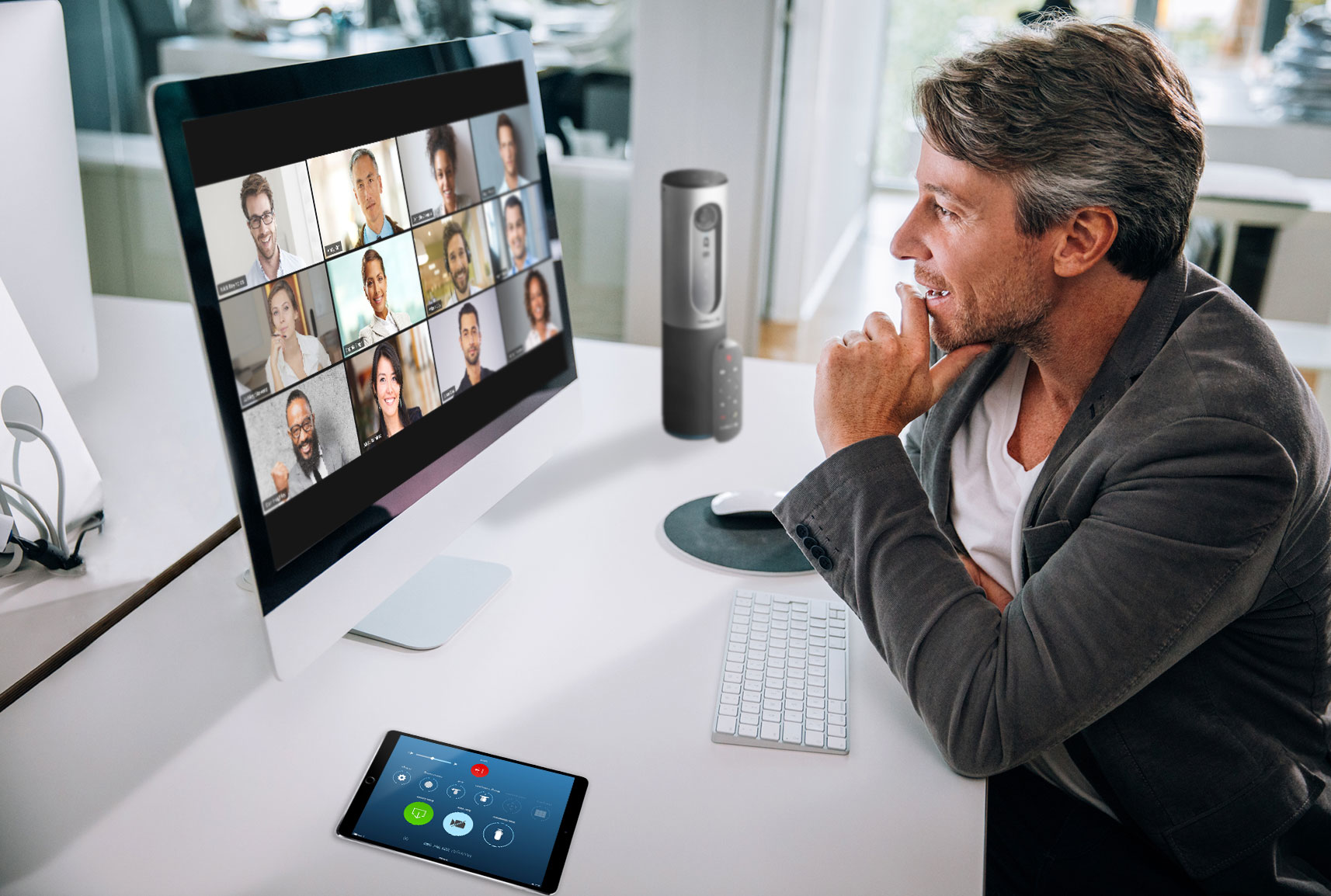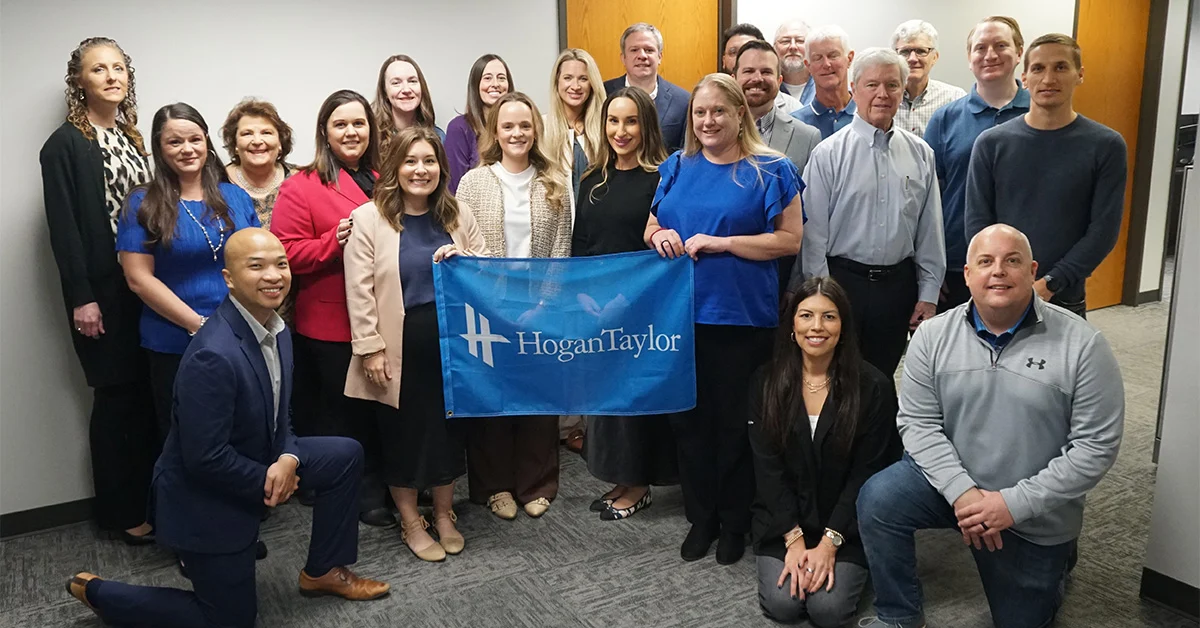With a large proportion of the workforce still confined to their homes, virtual meetings have proven a remarkably effective way for finance and accounting firms to align remote teams and keep workers connected.
However, best practices for using of this technology are still evolving and the learning curve continues. Here are my golden rules for professionals charged with hosting video calls:
- No agenda, no meeting — Having an agenda is vital for keeping attendees on task at any meeting. But in a forum where people are often distracted and tempted to multitask, following an agenda is even more critical. Create a PowerPoint presentation that can hold people’s attention and make the first slide a depiction of the agenda. Include the purpose of the meeting, the objectives that need to be achieved and how long the discussion will last. After a brief on-camera welcome, share your screen and start the PowerPoint deck you’ve prepared. Refer back to the agenda throughout the meeting as a visual reminder of what’s next as the meeting progresses.
- Use visual stimuli — The rest of your PowerPoint can include infographics of the main points you want to make to your CPA team. This gives them something to focus on while you’re speaking. Just be careful when you share your screen that you have minimized anything that’s not for public eyes.
- Have a backup plan — Technical issues can be a headache and a huge waste of time. In your meeting invite, include a phone number that people can dial into should the video call fail. Being ready to revert to a telephone conference allows discussions to continue with minimal disruption. If you don’t, you could lose valuable time and cause people to tune out even before you’ve begun.
- Get everyone involved — Keep an eye out for anyone not actively participating and invite them to share their thoughts.
- Set some ground rules — To help the meeting run smoothly, kick it off by letting attendees know how and when to ask questions. They can, for example, raise a virtual hand or use the chat function. Advise them to turn off their microphone when they’re not speaking.
- Video on, sound off — If bandwidth allows, ask participants to keep their cameras on. Not only does this allow you to read visual cues but it makes it easier to spot if someone isn’t paying attention. Let them know your plan in your meeting invitation so people know in advance they’ll be on camera.
- Keep to time — Communicating on a screen is more tiring for the brain than in-person discussions, making it harder to maintain concentration. Turn your camera back on yourself regularly during the meeting so people aren’t just staring for long periods at what’s on your laptop.
- Show empathy. Don’t forget that people are stressed in all kinds of ways during these long months of operating out of their homes. They still need a human touch, but how do you provide it in a virtual meeting? At minimum, start the call by simply asking participants how they’re doing during this unprecedented time. Depending on the relationship you have with attendees, maybe it’s bringing your child or pet in front of the camera to say hello.
- Always follow up — Sending a summary of discussion points to participants post-meeting where you flag any actions and deadlines sets a tone of accountability.
- Consider alternatives — Tech issues, interruptions and over-scheduling are just some of the factors that can lead to ineffective discussions and video call fatigue. Could that reconciliation statement be with an old-fashioned phone call? If a group discussion is more appropriate, keep the guest list to a minimum. The fewer people involved, the easier it is to facilitate a productive virtual discussion.
Of course, not all the video meetings you host will be with internal staff. It’s also necessary to engage with clients virtually these days. Here are some tips for on-screen etiquette that will help all participants get the most out of your virtual meetings.
- DO check your tech — Technical issues can sabotage any meeting, so make sure you’re not the problem if they occur. Test out your sound, video and microphone in advance and troubleshoot any new software.
- DON’T multitask — It’s easy to tell when someone is staring at a web browser or reading an email, compared to listening attentively. It is totally unprofessional and disrespectful to the people you’re trying to communicate with not to give them your full attention even when you’re not “on.”
- DO check your background — If you’re working from home with children in the house, rooms can be quickly turned upside down. Messy backgrounds are distracting and make you look unprofessional. If you haven’t had time to tidy up, use a virtual background instead.
- DON’T use speakerphone — Be considerate to other participants by speaking as clearly as possible, ideally through a headset. Make sure you’re in a quiet space where you’re unlikely to be interrupted.
- DO come prepared — It might be easier to wing it during a virtual meeting, but it’s not a good idea. Being ready to participate in discussions articulately is a basic courtesy to your colleagues.
- DON’T interrupt — Bear in mind that there’s often a delay during online meetings so pause after asking a question or listening to someone’s response. Unless you’re invited to ask questions, use the chat function to avoid inadvertently talking over someone.
- DO connect on a human level — Even though you’re physically distanced, remember your colleagues are more than just faces on a screen. Life is challenging for everyone right now so do your best to be kind, tolerant and supportive.
Doing business during a pandemic is a new experience for everyone and there isn’t a rulebook for how to navigate this new normal. Many virtual meetings can be frustrating and ineffective, but with a little thought and preparation they can be made effective, efficient — and even enjoyable.
==========
Paul McDonald is senior executive director at talent solutions and recruiting firm Robert Half. He writes and speaks frequently on hiring, workplace, leadership and career-management topics. Over the course of more than 35 years in the staffing industry, McDonald has advised thousands of company leaders and job seekers on how to hire and get hired.
Thanks for reading CPA Practice Advisor!
Subscribe Already registered? Log In
Need more information? Read the FAQs
Tags: Staffing





